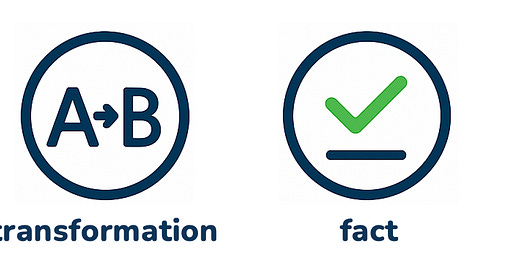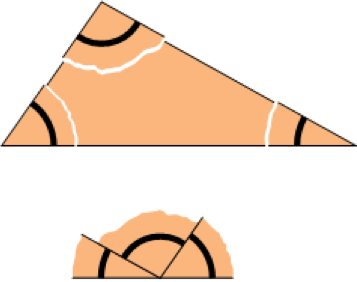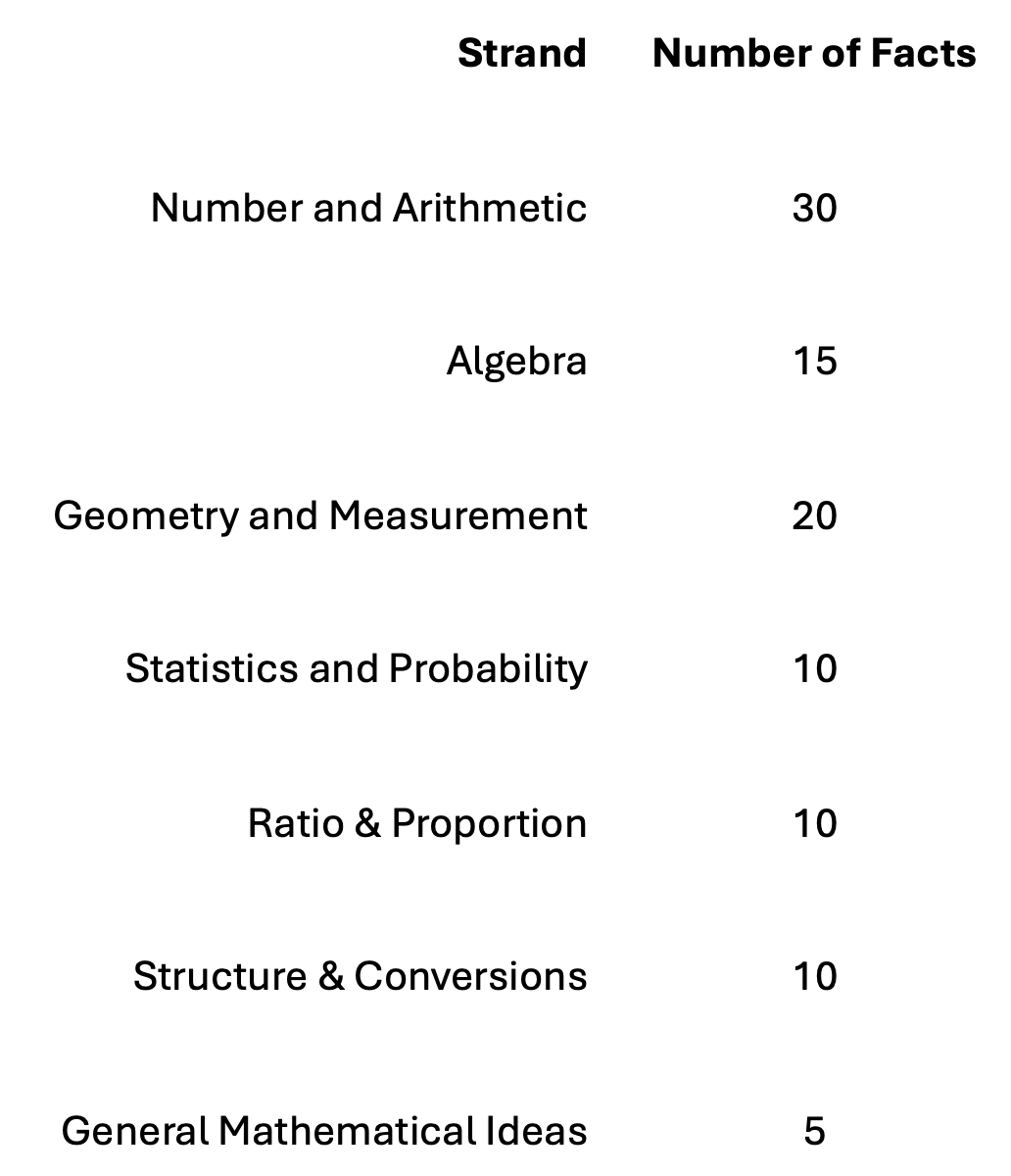Podcast is AI generated, and will make mistakes. Interactive transcript available in the podcast post.
In a previous post, How to Teach Anything, we saw that nearly everything, the hundreds and thousands of ideas we’ll come to teach in maths, can be atomised into one of just four elements.
Previously, we looked at how to teach (1) Categoricals, (2) Transformations, and we’ve seen how to deal with (4) Cognitive Routines via Routine Atomisation.
Now, finally, we will address Facts.
This is simultaneously straightforward, and surprisingly complex. So we’ll spend a few posts in the coming weeks fleshing it out in full.
Unlike the humanities and English, and some parts of the sciences, there aren’t many exam questions that ever require students to state a fact. No exam question ever asks ‘what is the interior angle sum of a triangle?’ Instead, they assume factual knowledge implicitly, and then ask that students make use of it e.g. what is the size of this angle inside a triangle, given the size of the other two angles.
This leads us to focus on replicating and generalising end-end processes through sequences of I do / We do / You do.
So it can feel like there aren’t many facts to learn in maths, not much outside of the angle facts and a basic number facts maybe. However, there are many more possible facts in the domain; the opportunity space is larger than we realise.
This will become all the more apparent when we look at the related distinction between implicit and explicit knowledge, and it is a key to mathematical oracy and literacy, alongside correlated-feature sequences.
The ‘surprising complexity’ of teaching facts means that we'll also be looking at factual atomisation, ideas around show and tell, alongside specificity versus generalisability, and object properties. We will also dip briefly into the many confusions about using language as a tool of communication, and therefore a tool of teaching. All this, while exploring ideas about trust, belief, proof, and acceptance.
If you haven’t already, subscribe now to stay in the loop:
Because this can take a while to cover in full, and it will unavoidably veer into the philosophical, along the way these posts will be interspersed with others that are more immediately practical.
Exploring the nature of facts, and teaching facts, necessarily interacts with philosophies and ideologies of education, and helps to explain some of the unconscious biases we pick up that shape our behaviours as teachers.
So let’s dive in now with the easy bit: how to teach facts.
Just tell them
First, here are some examples of facts:
“Two is the smallest prime number.”
“A pentagon has five sides.”
“Eight comes after nine.”
“Five times seven is thirty-five.”
“The interior angle sum of a triangle is 180 degrees.”
“Zero is the only number that is neither positive nor negative.”
“An equation has two expressions with an equals sign between them.”
”The area of a rectangle is given by length times height.”
Communicating a fact that you know, to a student who doesn’t yet know it, is straightforward, because all you have to do is tell them the fact.
Nothing more.
Just tell them.
So then, why do we overcomplicate this?
For example, I know many a teacher - and I’m one of them - who has drawn a triangle on a sheet of paper, and then cut out the angles and lined them up on a straight line to show that they sum to 180.
I know others who will go so far as to have every one of their students do this, generating a dozens of distinct triangles, all of which result in the three angles being cut out to form a straight line.
Even for teachers who have never done this, the demonstration is probably familiar to you.
But there is no clear justification for this activity. It doesn’t do anything to elucidate a why, it tells the student nothing about why the interior angle sum of a triangle is 180. It doesn’t even offer up a proof, nothing about this proves that the interior angle sum of a triangle is 180 degrees.
So why does any teacher do this?
Why was it not enough to just tell them?
The answer is that it probably was; making the real question why did it feel like it wasn’t enough to just tell them?
Answering that question takes a few steps in reason.
The first is to understand what we mean by rote learning, and rote knowledge.
This is where we will pick up again next week.
Until then, below is a list of 100 facts in mathematics, organised into these categories:
Over future posts, and especially after exploring factual atomisation, you can return to these to ask yourself:
Do they really need to know this?
Will they be examined on it?
Is there any value-add to their knowing it, even if they won’t be asked about it directly in an exam?
But would it really work to ‘just tell them’ this? Is something additional needed, and if so, why? What’s my real goal?
Are any of these facts unhelpful? If so, why?
Another interesting reflection will be to ask yourself how many of these you know, and how many you think you recall explicitly or implicitly in working through mathematical ideas yourself:
Keep reading with a 7-day free trial
Subscribe to Unstoppable Learning to keep reading this post and get 7 days of free access to the full post archives.











